[2008-07-18] Combination business card and drawing template for organic chemistry
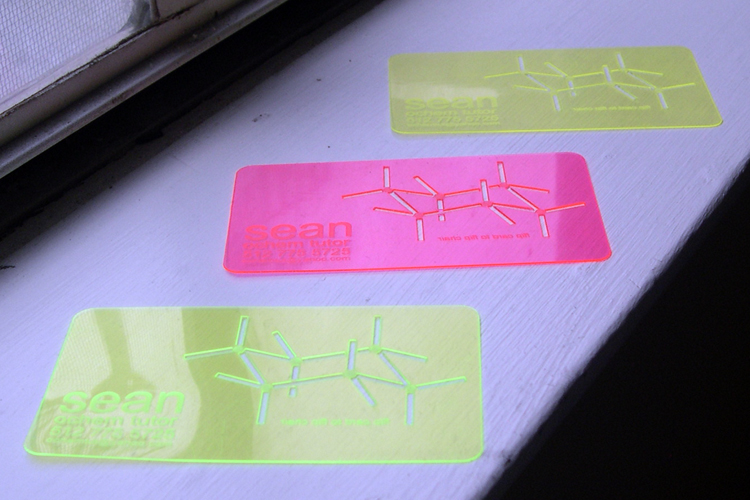
I supplement my income by working as an organic chemistry tutor. Austin is an enormous college town, and UT-Austin is full of budding pre-meds and scientists who have to pass two semesters of organic chemistry to graduate. One can work for a "tutor pimp" like House of Tutors, who verify tutors' credentials and connect them with students, or one can go it alone as an independent contractor. These days, the latter route really makes more sense, as the pimps take a pretty fair chunk of one's hourly rate as overhead, and free internet advertising makes it easy for lone operators to find student customers. An established independent tutor can make an hourly rate that is quite luxurious.
As is the case with many independent contractors, the best advertising a tutor has is word-of-mouth. To that end, it's worthwhile to distribute business cards to your students so they can pass them to their friends when they mention your name. Business cards tend to hang around longer if they serve some useful ancillary function to the bearer, which is why they're commonly printed with charts, tables, or other valuable reference information that might encourage a potential customer to keep the card close at hand.
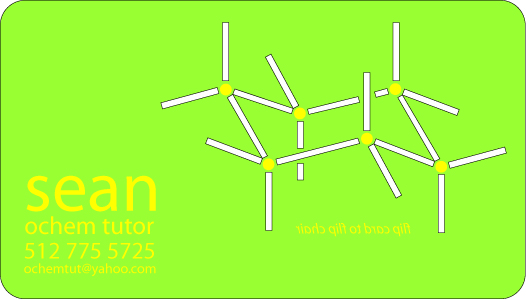
I've taught organic chemistry in many different capacities, and one task that consistenly gives students problems is learning to draw so-called "chairs," which are diagrams showing the arrangement of substituents on a saturated 6-membered molecular ring. I had looked before into the possibility of using drawing templates, like these, to help students master the art of chair-drawing, so when I started to think about what gimmick to use on my business card, the idea of incorporating a chair-drawing template into the card itself occurred to me.
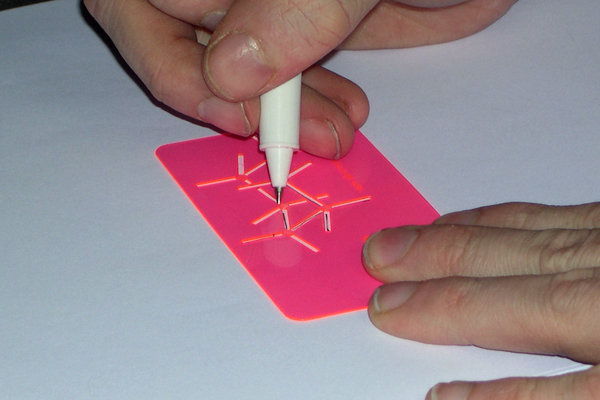
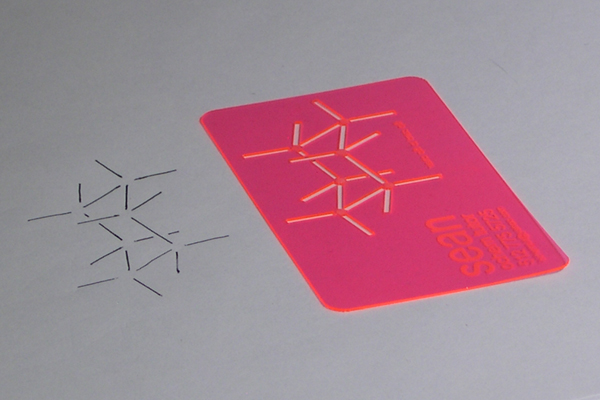
Thin transparent, fluorescent plastic quickly emerged as the material of choice. The incorporation of a drawing template, of course, required that the cards have cut-out regions. Of the technologies which might be used to produce these cut-outs in bulk, I knew laser-cutting would be by far the best value for a small run of cards. Having contracted for laser-cut parts before, I knew it would not be difficult to find someone to produce a few dozen business cards. The drawing template function, moreover, is improved if the card is transparent, to allow easier positioning of the template relative to other marks on the page. To minimize the number of processing steps involved, it makes sense to also use the laser cutter to produce the text on the cards, and this is easily done by using the laser in its raster setting to etch the surface of the plastic, rather than cut all the way through. The choice of edge-emitting flourescent plastic helps to make these etched regions really "pop" against the background. Plastruct offers an ideal transparent flourescent acrylic in 0.010" thickness, which is available in blue, red, yellow, and yellow-green. I ordered a 12" by 24"sheet of each and sent them on to my laser-cutting contractor, who cut sample card from each. The blue material was something of a disappointment, as it lacks both fluorescence and color and looks rather like a sheet of plain clear plastic. The green, red, and yellow, however, came out very well.
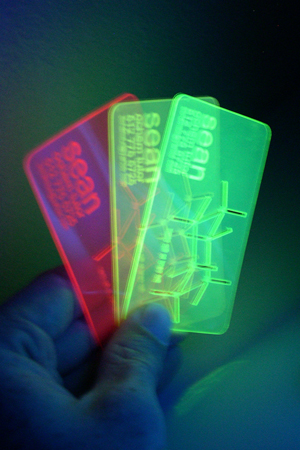
Chairs come in left- and right-handed versions, and "flipping" the chair is also an instrumental organic chemistry skill. I realized early on in the design process that the card could be flipped over to provide the mirror-image chair, and that it was not necessary to include two different templates. In order to emphasize this function to the student, the words "Flip card to flip chair" are printed in mirror type on the front of the card, so that they can only be properly read when the card and chair are flipped over.
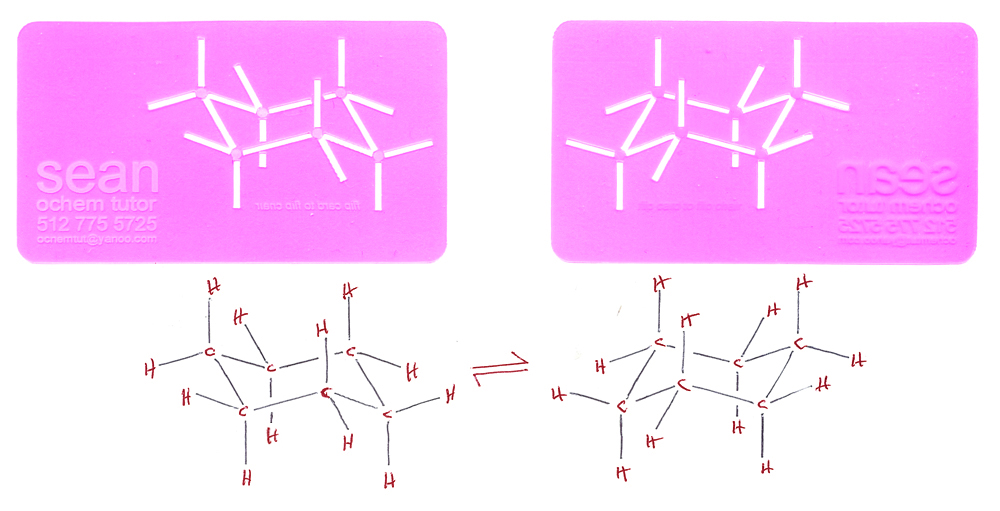
The template design includes overlapping bonds to show clearly which bonds are in front of the chair and which are behind. It also includes blank spaces at each of the ring atoms so that it's easy to write in the ring atoms' identities, which is useful for heterocyclic structures.
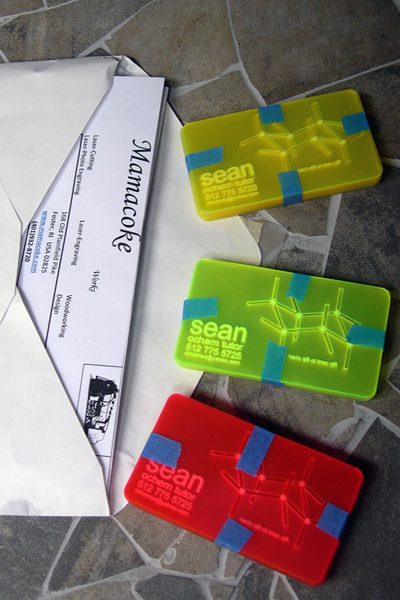
The contractor I found to produce the cards was Dana Bishop of the Mamacoke works. He was absolutely wonderful to work with. I sent him several drafts of the card design as it developed, and he patiently cut sample cards and mailed them to me, without charging a dime, until we got it just right. The amount I finally paid to have the cards cut is less than I would pay in some places to have paper business cards printed. I've also had him produce laser-cut parts for a molding pattern for another project, and they were completed with equal skill, timeliness, and value. I will doubtlessly be taking all my laser cutting to him in the future. Plus, he posted a cool movie on YouTube showing his laser cutter at work on the cards.
last modified 2013-11-09